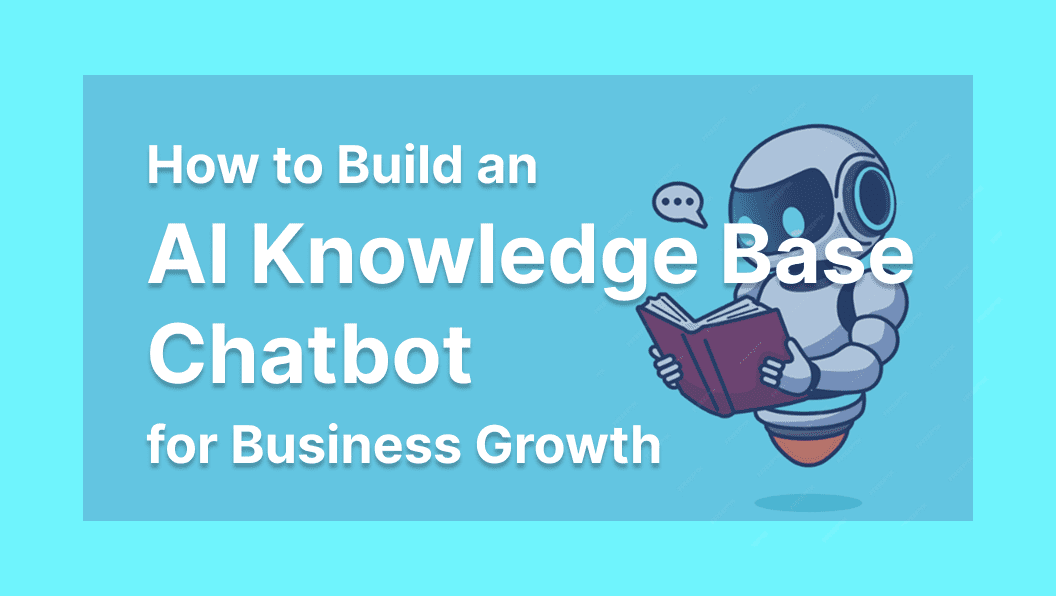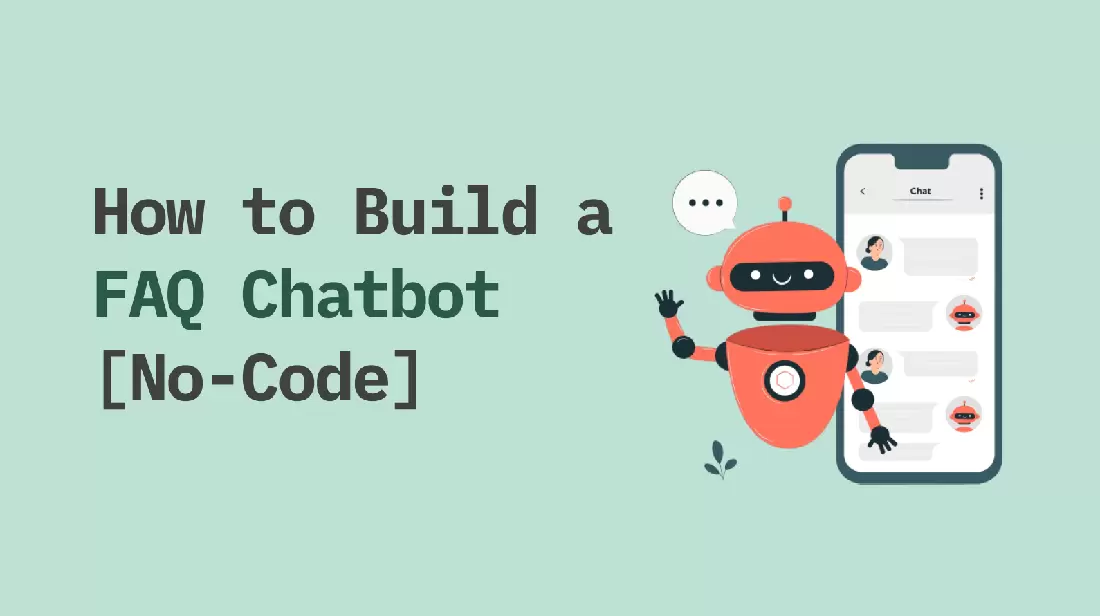Imagine that instead of listening to a prerecorded script or navigating through buttons, you could have human-like interaction with a virtual customer support agent. You could explain the issue naturally, engage in a back-and-forth discussion, and resolve your problem quickly. That's what Conversational IVR is about.
Conversational IVR uses AI and advanced speech recognition to have natural interaction between customers and automated phone systems. It provides a modernized way to engage with customers, resolve issues, and route calls to the right agents.
Today, 66% of customers prefer IVR systems powered with natural language. Therefore, let's explore the concept of conversational IVR in detail and highlight its working principle, benefits, and implementation strategy.
What is Conversational AI IVR?
Conversational AI IVR (Interactive Voice Response) is an AI-powered phone system that interacts with customers through natural language conversations. It combines the power of artificial intelligence (AI), speech recognition technology, and natural language processing (NLP) to understand spoken requests and generate natural responses.
When a customer calls a customer support line that uses conversation IVR, they can explain the issue verbally instead of struggling with going through a lengthy menu of different options. Afterward, the CIVR system interprets the customer's words, analyzes the intent, and guides them in the right way.
Conversational AI IVR is a two-way communication system in which the AI asks follow-up questions to clarify the request and then guides appropriately. It can also direct the call to live agents and share the full context and case history with them for effective communication.
This way, a CIVR offers customers instant support without time-consuming button navigation and helps agents handle only complex queries.
What is the Difference Between Conversational IVR and Traditional IVR?
A traditional IVR is about pre-recorded scripts, structured call flows, and button-based navigation. Customers have to spend time listening to menus and pressing numbers to reach the right option, which can be slow and frustrating.
Conversational IVR modernizes the traditional voice response system with AI-powered natural language understanding. Every customer can instantly talk with a virtual agent, explain the issue, and get an assistant right away. The support can be related to changing account balances, scheduling appointments, tracking orders, troubleshooting technical issues, etc.

The main differences between conversational IVR and traditional IVR are summarized in the table below:
| Feature | Conversational IVR | Traditional IVR |
|---|---|---|
| Customer Input Method | Natural language speech input | Limited voice commands or keypad inputs |
| Language Understanding | AI-powered Natural Language Processing (NLP) and Natural Language Understanding (NLU) for intent detection and context retention | Dual-tone-multi-frequency (DTMF) touch tones and Auto Attendants |
| Response Time | Instant and customized responses | Slow due to time-consuming navigation of multiple options |
| Support Availability | 24/7 real-time support | Limited hours depend on live agent availability |
| Topic Diversity | Handle simple to complex queries with the ability to have back-and-forth conversations | Limited to predefined menu options unless directed to a live agent |
| Call Redirection to Live Agent | Intelligent routing to live agents with full context and case history | Transfers to agents without context |
| Automation Scope | High automation with the ability to resolve 50-70% of queries autonomously | Limited automation with a focus on basic assistance and call routing |
| Learning & Adaptability | Learn and improve responses with each interaction using machine learning | No learning unless updated manually |
| Personalization | Provide personalized interactions | Generic interactions |
| Scalability & Flexibility | Easy to scale without extensive reprogramming | Time-consuming and complex reprogramming to scale |
| Cost Efficiency | Higher initial investment but lower long-term costs due to higher automated responses and improved agent productivity | Lower initial cost but higher long-term maintenance and operational expenses due to manual updates |
| User Experience | Enhanced experience with faster resolution and no wait time | Frustrating experience due to complex menus |
| Data Analytics | Advanced analytics by capturing customer sentiments | Basic analytics like menu selections, call logs, etc. |
Working Principle of Conversational IVR
Conversational AI IVR involves an intelligent use of Conversational AI to understand and respond to customer queries in a human-like tone. Its main components include:
- Natural Language Processing (NLP) to interpret customer speech.
- Natural Language Understanding (NLU) to understand the speaker's intent.
- Natural Language Generation (NLG) to create context-aware replies.
The working principle of conversational IVR software involves these five crucial steps:

- Decodes User Input: NLP captures and translates the customer's spoken words.
- Understands Intent: NLU interprets the meaning behind the user's message for deeper insight.
- Crafts Responses: NLG generates personalized and context-aware replies.
- Creates Natural Dialogue: AI components blend to deliver human-like conversations and engage in back-and-forth talks.
- Learns and Evolves: Machine Learning updates the system based on customer interactions to improve accuracy and efficiency.
All the above steps make conversational IVR a powerful virtual agent that offers customers the best self-service experience.
What are the Benefits of Conversational IVR for Businesses?
Today, 63% of customers want IVR systems to offer personalized experiences. Customers love using conversational IVR because it is faster and more interactive than traditional support. Plus, it helps businesses improve their customer service experience.

The key conversational IVR benefits businesses can gain are as follows:
1. Natural Interaction
The most crucial benefit of conversational IVR is that it supports natural two-way interaction, rather than menu-based interaction. Customers can express their queries verbally and engage with a human-like experience. They can either get the resolution from the virtual agent or get the call redirected to a human agent with full conversation history. This means that they don't have to repeat information multiple times.
2. Fast and Personalized Support
Conversational IVR software provides fast and personalized support. Other than no menu buttons, there is also no wait time. The virtual agent instantly picks up the call without any wait time. Moreover, the agent provides personalized support by analyzing the customer's context. This leads to a higher first-contact resolution rate, lower average handle time, and an increased satisfactory experience.
3. Cost Efficiency
Conversational IVR requires an initial investment but saves significant capital in the long run. Many factors help save costs, such as automating routine inquiries, lowering human agent requirements, improving agent productivity, and more. Plus, it also reduces operational expenses.
4. Multilingual Support and Scalable
With AI-powered IVR, customers get support in the language they speak. The AI technologies can interpret multiple languages and provide support in the customer's preferred language. This is useful for businesses that want to scale into new markets and offer customer support in the native language of customers.
5. Real-Time Data Extraction
Conversational AI IVR is more than just a virtual bot speaking a scripted response. It integrates with CRM and corporate knowledge base to extract real-time data and provide informative responses. It retrieves the customer information from CRM and uses it to offer personalized interaction.
6. Intelligent Call Routing
Other than fast and responsive interactions, conversational IVR also ensures intelligent call routing. It redirects the call to the most relevant agent and also prioritizes the call by analyzing the context. Think of a conversational IVR case study where a customer reports a service outage. Since this issue needs urgent attention, it is instantly routed to a technical specialist.
How to Implement Conversational IVR Without Hassle?
The use and popularity of advanced IVR is just getting started! The conversational IVR market is projected to grow at a 10.5% CAGR between 2026 and 2033, valued at $3.5 billion in 2024 to $8.9 billion by 2033.
It is more important than ever for organizations to implement conversational AI IVR to enhance customer interaction experience and get a competitive edge.

The typical steps to implement CIVR include:
- 1. Set Goals: Set the goals you want to achieve with CIVR, such as reducing call volume, improving resolution rate, increasing customer satisfaction, etc.
- 2. Pick a Platform: Choose a CIVR platform that aligns with your needs and budget. Prioritize the ones that offer a user-friendly interface, multilingual support, scalability, integration, etc.
- 3. Define Customer Journey: Define the complete customer journeys that CIVR should support, such as balance inquiries, product information, payment processing, etc.
- 4. Build the Conversational Flow: Design the conversational flow the agent must follow while interacting with customers.
- 5. Integration: Integrate the newly created CIVR with existing systems for intelligent data retrieval in real-time.
Although it looks easy to implement conversational IVR, the most crucial thing is to pick and use a reliable software solution. Among the different options available, GPTBots is one top-notch platform to build and deploy AI agents.
GPTBots - The Advanced AI Agent Your Business Needs
GPTBots is an enterprise AI agent platform that provides AI-powered automation for customer support, marketing, and sales teams. It helps organizations build, customize, and deploy AI agents with a no-code visual agent builder.
GPTBots gives you the flexibility to use multiple LLMs in your AI agents, including GPT, Llama, Claude, and more. Plus, it allows training the agent with the corporate knowledge base and integrating it with all popular corporate tools.

Why GPTBots is one of the top-notch conversational AI agent builder platforms is evident from the following features:
Key Features:
- Supports Multiple LLMs: Use GPT, Claude, LLaMA, and more to power your AI agents with the best model for each task.
- Voice & Text Input: Enable users to interact via voice or text—ideal for AI-driven IVR experiences.
- Knowledge Base Integration: Train agents with your internal documents, databases, and URLs for accurate responses.
- Multilingual Support: Communicate in 90+ languages to serve a global audience.
- Omnichannel Integration: Connect with users on WhatsApp, Messenger, Telegram, and more.
- Seamless Human Handoff: Smooth transitions from AI to human agents for better customer experience.
When GPTBots' AI agent is in action, it is capable of pulling relevant information from a knowledge base and executing many tasks without human intervention. That's why it can automate 90% of customer issues and reduce customer support costs by 70%.
Conclusion
Conversational IVR is becoming a promising automated phone technology to offer customers natural and fast responses over the phone. Customers are finding it a more intuitive experience than traditional IVR. In addition, it is helping businesses improve agent productivity, lower expenses, and enhance operational efficiency. Therefore, we will wrap up by recommending that you integrate conversational AI IVR into your customer support and offer customers a taste of personalized service.
Get a Custom DemoFAQs
What does IVR mean?
IVR stands for Interactive Voice Response. It is an automated telephone system that helps phone callers interact with a computer-operated system through voice or keypad inputs. It offers voice-based assistance using pre-recorded messaging, text-to-speech technology with DTMF interface, or AI-powered natural language processing.
What is the difference between IVR and chatbot?
IVR (Interactive Voice Response) is an automated phone system that handles voice-based phone interactions. It allows callers to navigate through menus or explain their queries in voice commands. In contrast, a chatbot is a text-based support system that interacts with customers through back-and-forth text-based conversation.
What is the role of AI in conversational IVR?
AI is the brain of conversational IVR. It powers the system to understand and respond to customers in a human-like tone by integrating key technologies. It uses Natural Language Processing (NLP) to interpret spoken language, Natural Language Understanding (NLU) to understand customer intent, and Natural Language Generation (NLG) to provide context-aware replies.







